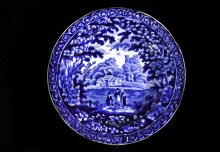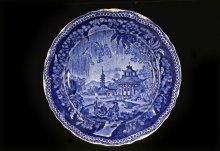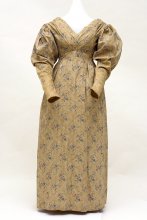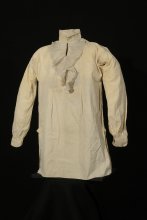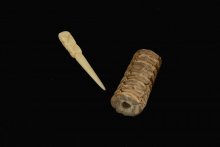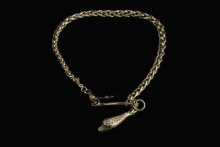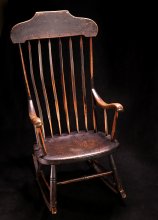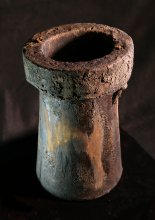Early Statehood (1818-1848)
On December 3, 1818, Illinois became the twenty-first state of the Union. Ostensibly a free state, slavery was “grandfathered” in to the constitution for existing colonial slaveholders, and all citizens were permitted to keep indentured servants. Over the next thirty years, the state experienced a transition from an American frontier to a settled and rapidly developing agricultural state. Technology changed agriculture and expanded markets. It also fostered changes in government, legal, and educational institutions.
In 1832, Black Sparrow Hawk, a Sauk warrior, and more than 1,000 Sauk and Fox, attempted to return to their principal community of Saukenuk, present-day Rock Island. Conflict soon followed, and warriors fought a series of battles with Federal troops and Illinois militia in Illinois and Wisconsin. Decimated in a final fight at Bad Axe in Wisconsin, the Sauk and Fox, along with other tribes once resident in Illinois, signed a treaty reaffirming their land cessions and moved to reservations west of the Mississippi River.
This plate was produced by James & Ralph Clews in Staffordshire. Their ceramics were commonplace on the American frontier. The image in the center of the plate is a distant view of Rochester Castle, on the River Medway, east of London. Portions of the castle date to the 11th century. English artist Joseph Mallord William Turner depicted the castle in his work Rochester Castle From The River, painted circa 1793.
In the early 1800s, potteries in the Staffordshire region of England were becoming more and more dependent on the American market at a time when relations between the two nations were sliding towards war. In the months leading up to the War of 1812, trade was suspended, and a financial crisis ensued that, according to pottery owner Ralph Stevenson, left one-third of pottery workers unemployed and 35 businesses shuttered. His business had just opened in 1810.
Figured cotton gowns such as this were very popular in the 1820s as the cotton economy boomed and advances in dyeing and printing technology made a wide variety of colors and patterns available to middle-class consumers. This dress was made from cotton that was likely grown by enslaved people in the American south, woven into cloth, dyed, and printed in the textile mills of New England or England, and then shipped to Illinois on an expanding network of railroads and steamships.
This shirt was made by Salome Enos for her son, Zimri Enos, to wear to his wedding on June 10, 1846. Salome and her husband, Pascal, came to Springfield in 1823 and became one of the first four landowning families of the town. Their son, Zimri, briefly practiced law before becoming a surveyor and civil engineer.
When Elihu and Sophronia Thorpe moved to Illinois from New York in 1841, they brought this bone toothpick and corncob case with them. It had belonged to Sophronia’s grandfather, Alexander Osborn, who served in the Revolutionary War. According to family legend, Alexander had carved the toothpick and case while he was in camp, sometime around 1780.
This watch chain was made by James M. Daigh of Perry, Illinois, when he was mining gold in California in 1849. Daigh, a native of Virginia, had settled in Illinois during the 1820s and amassed more than 200 acres of land in Pike County.
This Windsor-style rocking chair belonged to Conrad Will, a co-author of Illinois’ 1818 constitution and the namesake of Will County.
This bucket contained animal fat or tar used to grease the wheels of the ox-drawn wagon that transported John Ivins Foster and his family to Illinois from Kentucky in November 1829. Foster, a gunsmith and farmer by trade, settled in Curran township, Sangamon County, where he eventually amassed more than 360 acres.
The Kirtland’s Water Snake shares some similar habitats and habits as the Massasauga Rattlesnake and is also under scrutiny as its numbers continue to decline. It is not venomous, but it uses crayfish burrows like the Massasauga and spends most of its life underground. Biologists hoping to survey the secretive snake often will use a cover board, a corrugated sheet of aluminum that is placed over a crayfish burrow.
The Eastern Massasauga Rattlesnake is a small, venomous snake recently listed as threatened by the U.S. Fish and Wildlife Service. It persists in only a few locations in Illinois, Indiana, Iowa, Michigan, New York, Ohio, Pennsylvania, and Wisconsin. The Fish and Wildlife Service describes the Massasauga as “a small snake with a thick body, heart-shaped head and vertical pupils.”
Pages






